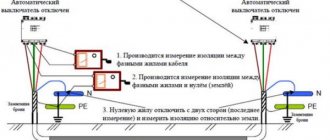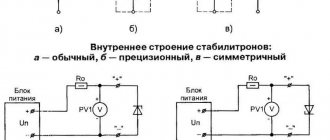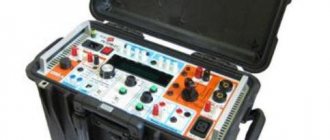PTEEP and POT R M are written in blood... It sounds terrible, but that's how it is. Behind every line there are human victims. Neglecting safety rules leads to tragedy.
According to statistics, most often the victims of accidents in electrical installations are experienced electricians with extensive work experience and a high electrical safety group.
A person believes in his professionalism so much that he stops being afraid - and this is the sad result.
At any enterprise, electrical safety issues should be dealt with by a specially trained person responsible for electrical equipment . This is not a position, but an “honorable duty,” as Rostekhnadzor inspectors joke.
Let's quote PTEEP : “1.2.3. To directly fulfill the responsibilities for organizing the operation of electrical installations, the head of the Consumer (except for citizens - owners of electrical installations with voltages above 1000 V) appoints, by the appropriate document, the person responsible for the electrical equipment of the organization (hereinafter referred to as the person responsible for the electrical equipment) ... The person responsible for the electrical equipment and his deputy are appointed from among the managers and specialists of the Consumer.” .
It is
this specialist who is responsible for maintaining special documentation and organizing measurements and testing of power tools.
What is a portable power tool?
Electric impact wrenches, electric drills, electric planes, grinders and polishers and other electrified machinery that is not secured to a permanent foundation, as well as electric extension cords and portable lights are all portable power tools .
Before recording the results of measurements and tests in the journal, these actions must be performed . You need to start by assigning each power tool and portable lamp a serial number (according to the new rules, an inventory number), which is written on the body with paint or a permanent marker in the place that is least exposed to mechanical stress.
How to check and verify?
When checking electrical tools, a thorough external inspection of the equipment being tested is carried out for the presence of mechanical damage, damage to the integrity of the housing, inspection of the insulation of the power cable, and analysis of the integrity of the current-carrying conductors. In addition, the mechanical integrity of the plug and the quality of the contacts are checked.
Verification is a more thorough procedure that must be carried out at a certain interval. It includes a set of the following operations:
- Measuring the insulation of the cable cores powering the tool. Produced using a megger;
- Determining the integrity of cores using;
- Analysis of tool operation in idle mode for 5-10 minutes. In this case, it is carried out a second time (the instrument is considered certified if this value is at least 0.5 MOhm.
According to regulations, household power tools must be checked at least once every six months. If an industrial tool is constantly exposed to unfavorable factors (high temperatures, increased dust, chemical exposure), the maximum period between checks should not exceed 10-12 days.
The procedure for routine inspection of professional power tools differs from the similar procedure for checking household devices.
Who has the right to carry out measurements and tests?
To carry out testing and measurement work special instruments are required . Instruments are an integral part of the electrical laboratory, therefore, the enterprise must have such a laboratory in order to carry out the work on its own.
If, due to various circumstances, an enterprise cannot afford such luxury, it should contact an organization that owns a licensed electrical laboratory and qualified personnel.
The electrical safety group for persons carrying out testing and measurement work must be at least III .
logbook for recording and testing electrical equipment.
Electrical testing of power tools in the laboratory
Our company's certified laboratory has all the necessary human and technical resources to perform electrical tests and equipment inspections. Along with electrified tools, our laboratory tests PPE (personal protective equipment) and tests hand-held insulating tools used when performing work in electrical installations up to and above 1000V.
Among the advantages of our company are the following:
- for preliminary approval of the scope of work or on-site consultation, our specialist travels to the site free of charge;
- budgeting is carried out in a short time;
- in emergency cases, our electrical laboratory goes to the site on the day of the call;
- We work with customer sites throughout Russia;
- upon completion of work, the customer is provided with comprehensive reporting;
- consultations with our clients and potential customers are provided free of charge;
- Along with low prices for services, we provide discounts.
To order a service or get a consultation, contact our specialist on the website. You can call, place an order for a call back, write a message via online chat or email.
If there is a need to test, check power tools, personal protective equipment or hand-held insulating tools, this is the place for you.
Posted information
The log contains the following columns :
- name of the power tool;
- inventory number;
- date of last test;
- reason for testing, inspection (after repair or periodic);
- insulation resistance measurement;
- checking the serviceability of the grounding circuit;
- external inspection and check of idle operation;
- date of the next test, inspection;
- the person who carried out the inspection, test (full name, signature).
We will consider the order of filling out each of the columns separately and in great detail.
Name
It must exactly match the name of the instrument indicated in the passport.
For example, you cannot simply write “drill”; you must indicate: “Makita HP 207 network impact drill.”
Inventory number
The procedure for assigning and applying an inventory number to the instrument body was discussed above.
At this stage of filling out the journal, the inventory number is recorded without errors in the appropriate column.
Date of last test
Everything is very simple here: we write the date of the last test of a portable power tool, recorded in the log. If the tool is new, enter the factory test date indicated in the passport in this column.
Reason for testing
There are only two such reasons: the instrument has been repaired and requires additional testing, or the next inspection is due (6 months have passed since the date of the previous test).
How to prepare the tool for use?
Instrument inspection diagram.
Electrical tools are checked daily before use. It includes simple steps:
- visual inspection of the instrument to detect cracks in the body;
- checking the reliability of fastening of all parts;
- inspection of the supply electrical cable to determine the integrity of its insulation
- monitoring the integrity of electrical connections, if any.
In parallel with the inspection of the power tool, the necessary care is carried out: removing dust and grease from the tool body.
External inspection and checking idle speed
Checking a power tool should begin with an external inspection. Procedure :
- carefully inspect the body of the instrument, make sure there are no cracks, chips or dirt;
- carefully examine the plug, paying attention to how tightly the pins are fastened in the body; if the plug body is dismountable, check the fastening screws, use a screwdriver to tighten all screw connections, and make sure the body is intact;
- Check the supply wire for flexibility, the absence of twists, breaks and cracks on the surface of the wire, inspect the attachment points to the plug and the body of the tool (double insulation must not be broken).
Checking the idle operation is carried out by connecting the tool to the electrical network and pressing the “Start” button. The power tool is tested without load. What to pay attention to:
- how smoothly the “Start” button is pressed;
- is there any extraneous noise in the engine operation;
- does the instrument smell of burnt insulation?
- is there any runout of the rotating parts of the tool;
- Is there any sparking during startup?
Based on the results of the inspection and testing at idle speed, an entry is made in the journal, including the date of the test and its result (satisfactory or unsatisfactory).
Electrical safety classification of power tools
When operating an electric tool, you should know that, according to the current GOST, it is divided into several protection classes. The inspection of portable power tools, its frequency and methodology directly depend on this.
- 0 - has only working insulation without grounding devices and connections;
- 01 - there is working insulation and a grounding element, but the cord itself with which the tool is equipped does not have a grounding wire;
- 1 - has working insulation and a grounding element, which is connected through a cable having a corresponding terminal;
- 2 - equipped with double insulation, that is, electrical wiring and live parts are insulated, and the housing is made of dielectric material;
- 3 - this class of power tools is connected to a low safe voltage - no more than 42 Volts, and the devices are not subject to grounding.
Most often, in everyday life and at the enterprise, workers use class 2 power tools, since they have sufficient insulation so that a person is not injured.
Insulation resistance measurement
This procedure is performed using a megohmmeter. Device requirements :
- output voltage – 1000 V;
- the date of the next verification has not expired (indicated on the label attached to the device body, after the words “Best before...”);
- absence of dirt and visible mechanical damage (cracks, chips) on the device body.
The measurement is carried out by a team of two people, the electrical safety group of one of them should not be lower than III . Before starting work, you need to check the megohmmeter .
To do this, you need to short-circuit the terminals of the device , rotate the handle until the arrow on the scale approaches 0. Then you need to disconnect the terminals and rotate the handle again . The instrument needle should deflect towards ∞.
Measurement procedure:
- The terminals of the device are connected to the plug pins of the power tool being tested. It is necessary to pay attention to the fact that the terminal tips of the device do not touch each other . Depending on the type of megohmmeter, you need to rotate the handle of the device or press the button for 1 minute. Record the megohmmeter readings, stop measuring, disconnect the leads.
- Fix one of the device terminals on the pin of the tool plug, the second - on a metal part of the tool body. Carry out the measurement within 1 minute , record the instrument reading, and stop the measurement.
- Connect the terminal of the device to another pin of the tool plug; do not touch the terminal of the device previously connected to the metal part of the tool body . Carry out the measurement for 1 minute, record the instrument reading, stop the measurement, disconnect the leads.
The insulation resistance is considered normal if the measured value exceeds 0.5 MΩ.
If at least one of the measurements shows a lower value of insulation resistance , the tested power tool is rejected (entry “Unsatisfactory” in the corresponding column of the journal).
If all three measurements of the insulation resistance of the tool showed satisfactory results , an entry is made in the appropriate column of the journal, recording the date of the test and its result (satisfactory).
Regulations
The conditions for safe operation and testing of power tools are regulated by the “Rules for labor protection when working with tools and devices”, approved by order of the Ministry of Labor and Social Protection of the Russian Federation No. 835n dated November 27, 2020.
In accordance with the Rules, power tools are divided into the following safety classes:
- Class 0 includes power tools in which only basic insulation serves as protection against electric shock without connecting exposed conductive parts to the protective neutral wire;
- Class 1 is assigned to instruments in which, in addition to basic insulation, protection is provided by connecting exposed conductive parts to a protective conductor;
- power tools of the 2nd safety class have double or reinforced basic insulation;
- Class 3 is represented by instruments powered by ultra-low voltage sources not exceeding 50 volts.
In addition, any mechanized tool, including electric, must comply with the requirements of the technical regulations of the Customs Union TR CU 010/2011 “On the safety of machinery and equipment.”
Power tools powered by alternating current voltage from 50 to 1000 volts and direct current from 75 to 1500 volts inclusive are classified as low-voltage devices. The rules for their operation are regulated, in addition to the above-mentioned documents, by the technical regulations TR CU 004/2011 “On the safety of low-voltage equipment.”
Checking the serviceability of the grounding circuit
The test is performed on a power tool that has grounding pins on the plug. The point of this check is to ensure the integrity of the grounding circuit , therefore, the closer the device reading is to 0, the better. Requirements for the device:
- the date of the next verification has not expired (indicated on the label attached to the device body, after the words “Best before...”);
- absence of dirt and visible mechanical damage (cracks, chips) on the device body.
The check can be carried out by one person. You should start by testing the functionality of the ohmmeter: turn on the device and short-circuit the terminals. The arrow on the scale should point to 0. After opening the terminals, a working device will show ∞.
actual circuit integrity check is carried out as follows: one of the terminals of the device is attached to the grounding contact of the tool plug, the second - to the metal parts of the case.
When the device is turned on, its readings are recorded, the result is entered in the appropriate column of the log with the date indicated.
The grounding circuit is faulty if the instrument readings tend to ∞ (record “Unsatisfactory”). In this case, the power tool cannot be used .
What is verification?
Verification is a set of measuring activities aimed at determining the technical characteristics of electrical products. For verification, a certain frequency is established. In production, verification is most often carried out at least once every 6 months. “Not less often” just means that such a procedure can be carried out much more often. Thus, in conditions of intensive use of power tools, it is recommended to perform verification once every 10 days.
The operator working with the tool being tested is not allowed to perform verification. This function must be performed by specialists with the necessary clearance. The main task of verification is to measure grounding and determine the quality of the insulator. Grounding is checked using an ohmmeter. A megohmmeter is used to test the integrity of electrical wiring and determine the insulation resistance between phase and ground.
An insulation resistance of 0.5 MΩ indicates its reliability and the possibility of further operation.
The test is carried out with the voltage turned on for at least 1 minute. An insulation resistance of 0.5 MΩ indicates its reliability and the possibility of further operation. If the electrical wiring is not cleared for further use, it is either replaced or the power tool is written off. The next stage of verification is to study the operation of the device at idle (at least 5 minutes). During this procedure, the condition of the motor brushes is inspected. Excessive sparking indicates that the brushes need to be replaced. After each verification, the data obtained is entered into a special journal.
If the production site organizes centralized storage of electric tools, then its inspection is carried out in accordance with the regulations established at the enterprise. The instrument is verified and inspected after each use, and the results are documented. The tool is issued to the employee on record. At the end of the work, the tool is handed over for storage, about which an additional entry is made in the appropriate journal. In the event of an electrical injury to an employee, such a log can be used in legal proceedings as an official document. Responsibility for the frequency and quality of verification lies with a safety engineer or other authorized person.
Date of next test, inspection
The frequency of inspections was mentioned above. It is worth dwelling in more detail on those cases where tests are carried out more often than once every six months . This becomes necessary under the condition of active use of a portable power tool; the timing is determined by the person responsible for the electrical equipment.
How to determine the date of the next test: add 6 months to the current date (or the amount determined by the person responsible for electrical equipment) and make an entry in the appropriate column of the journal.
We also suggest that you familiarize yourself with the design and maintenance of such journals at the enterprise: registration of office memos, incoming and outgoing documentation, employment contracts, orders for core activities and induction training. And for those who are responsible for maintaining a book of strict reporting forms, issuing work books, working hours and fire extinguishers, we have prepared separate articles.
Electrical tool tests carried out for certification purposes
To carry out the circulation and operation of electrical tools related to low-voltage equipment in the territory of the Customs Union, it is necessary to have a certificate of conformity TR CU 004/2011. The certification process involves testing a batch or individual samples of equipment. Tests are performed by a laboratory included in the Unified Register of Certification Bodies of the Customs Union.
Certification tests are carried out to establish compliance of low-voltage equipment with the following safety requirements:
- providing the necessary level of protection against electric shock from direct and indirect contact;
- no increased risk of injury from elevated temperature, traumatic effects of electric arc or radiation during operation;
- a sufficient level of mechanical protection against injury from both rotating and stationary parts of the equipment.
In addition, the certified equipment must not be a potential source of fire, both in normal and emergency modes.
The person who carried out the inspection or test
The data of the person who carried out the inspection (last name, initials) is entered in this column
This completes the filling out of the electrical tool inspection and testing log, so that in six months (or earlier) the entire procedure can be repeated .
It may seem to some that all of the above activities are redundant and that it is not at all necessary to carry them out. Let's try to convince a hypothetical opponent of the opposite.
Rostekhnadzor statistics tell us that the majority of accidents (more than 60%) occur at consumer electrical installations. The reason is failure to comply with mandatory measures aimed at maintaining the safe condition of electrical equipment , including portable power tools.
It is worth thinking about the fact that unwillingness to follow the rules leads to human casualties and drawing appropriate conclusions.
Checking power tools
Electric current is the power source for household and industrial equipment. It carries a danger to human health - electric shock can cause injury and death.
If an electrical appliance or power tool is not in good working order, there is a risk of a short circuit. Touching such a device is also unsafe because the electric shock occurs suddenly.
In view of this, it is considered critically important to check the technical condition of power tools, and periodically. They begin with the acquisition of the device: directly upon acceptance and assessment of the condition of a particular device.
The general principles for the frequency of inspection of power tools are as follows:
- Analysis of the condition before direct use according to a number of criteria.
- Compliance with the rules of use prescribed by the manufacturer and established by the owner of the device.
- Elimination of breakdowns, replacement of parts to extend the service life of the mechanism.
- Suppression of actions aimed at equipment breakdown.
The problem with this is the need to know exactly which factors and influences are harmful to a particular device. Their prevention and timely repair actions are the key to trouble-free operation. They complement the periodic inspection check.










